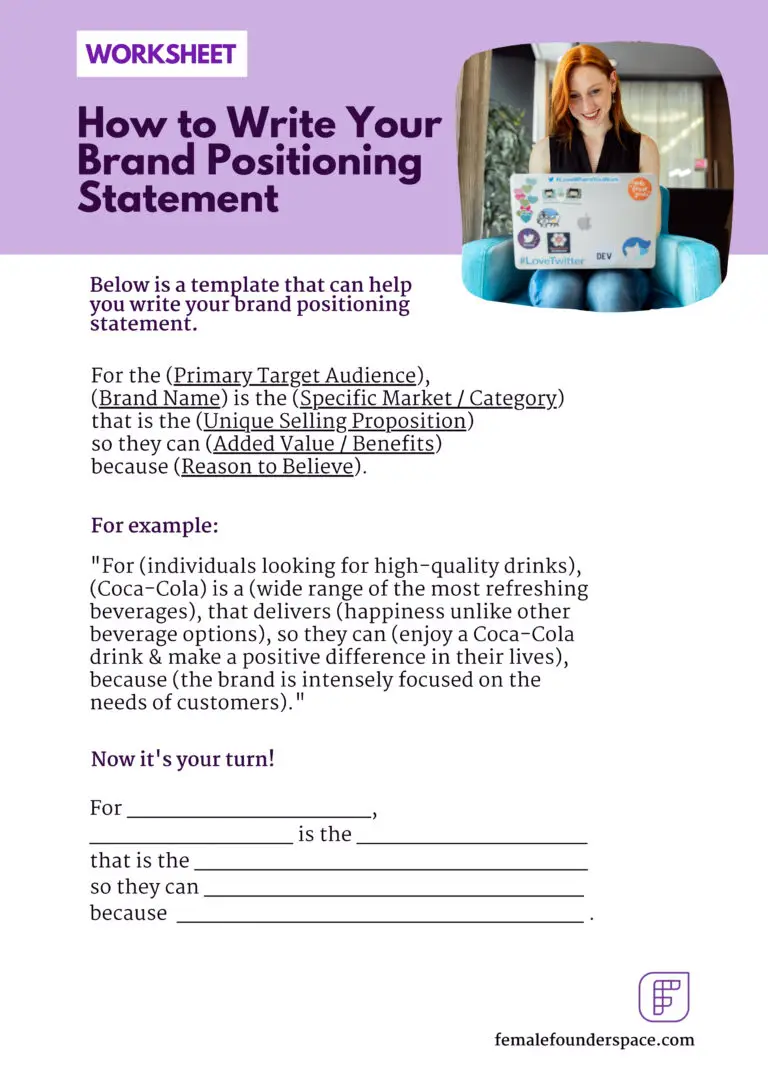Build Your Startup Brand from Scratch
-
Why Your Startup Needs a Brand & Essentials to Get Started
-
Step 1: Start With Your Why & Your Purpose
-
Step 2: Define Your Target Audience & Positioning Based on Market Research
-
Step 3: Develop Your Brand’s Personality, Voice & Tone
-
Step 4: Create Your Brand Name & Brand Identity
-
Step 5: Integrate Your Brand Into Business4 Topics
-
Branding in the Age of Social Media2 Topics
-
Rebrand or Revitalize Your Brand Successfully
-
Get Started With Your Branding
Step 2: Define Your Target Audience & Positioning Based on Market Research

Now that you’ve identified your purpose, it’s time to define your target audience and write your brand positioning statement. To do this, you need to do some prior market research! This lesson is divided into three parts doing your research, identifying your target audience, and finally, writing your brand positioning statement!
Part 1. Do Your Research
First, you need to do some market research corresponding to your brand. Research your potential customers and above all, research your competition. This will help you create a brand that resonates with your target market.
Market research is the process of gathering information about your target market. It helps you to understand your customers and what they want. It also helps you to understand your competition and what they are doing. There are many ways to do market research. You can use online tools, such as surveys and social media, or you can hire a research company. There are also many free resources available, such as government data and trade associations.
First, you can look at your competitors’ websites and marketing materials. See what they’re doing that’s working well, and take note of any areas where you could improve upon their approach. You can also read online reviews of your competitors’ products or services. What do customers like about them? What do they complain about? This feedback can give you insights into how to better position your brand. Your competition can be divided into two categories: direct and indirect. Direct competitors are businesses that offer the same product or service as you do. Indirect competitors are businesses that offer a different product or service, but satisfy the same need or want as your business does.
Once you have an understanding of who your competition is, you can start to research your potential customers. Talk to people in your target market directly. Ask them what they’re looking for in a product or service like yours. What would make them choose your brand over others? These conversations can give you invaluable insights into how to create a winning brand strategy. There are several ways to do this, but some of the most common methods include surveys, focus groups, and interviews.
Surveys: You can create surveys to collect data from your target market. This data can be used to understand the needs and wants of your potential customers.
Focus groups: Focus groups allow you to gather qualitative data from a group of people in a controlled setting. This data can be used to understand the motivations and concerns of your target market.
Interviews: Interviews are another way to collect qualitative data from individuals in your target market. This data can be used to understand the thoughts and feelings of your potential customers about your product or service.
The most important thing is to get started! Don’t wait until you have everything perfect before you start marketing your business. The more you know about your target market, the better equipped you’ll be to reach them with your brand.
Part 2. Identify Your Target Audience
Based on the research you did in part 1, identify your target audience (target customer) and be very specific about this person. Specify the age, gender, behaviour, demographics & interests among many other important characteristics about your target customer. To help you in this process, we have prepared a worksheet for you to answer and download below. Take a pen and get working!


